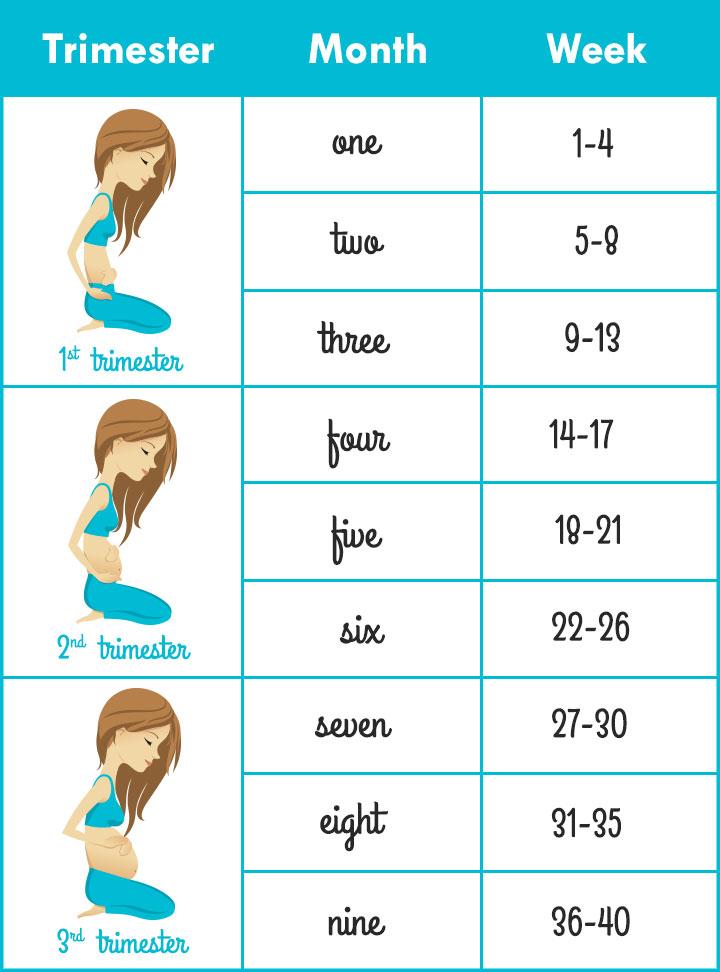
Weeks in Pregnancy: A Comprehensive Guide to Fetal Development
Pregnancy is a transformative journey marked by significant changes in both the mother’s body and the developing fetus. Understanding the progression of pregnancy week by week provides invaluable insights into the remarkable growth and development of a new life.
First Trimester (Weeks 1-12)
Week 1:
Pregnancy begins with fertilization, the union of a sperm and an egg. However, this week is typically not counted as part of the pregnancy duration.
Week 2:
The fertilized egg, now called a zygote, travels through the fallopian tube towards the uterus. It undergoes rapid cell division, forming a hollow ball of cells known as a blastocyst.
Week 3:
The blastocyst implants into the lining of the uterus, a process called implantation. This triggers the production of the hormone human chorionic gonadotropin (hCG), which is detected in pregnancy tests.
Week 4:
The embryo, the developing fetus, begins to form. The neural tube, which will eventually become the brain and spinal cord, develops.
Week 5:
The embryo’s heart begins to beat. The placenta, a vital organ that provides nutrients and oxygen to the fetus, starts to develop.
Week 6:
The embryo’s limbs and facial features begin to take shape. The eyes, ears, and nose become visible.
Week 7:
The fetus’s fingers and toes start to develop. The internal organs, such as the liver and kidneys, begin to function.
Week 8:
The fetus’s external genitalia begin to develop, allowing for gender determination. The fetus’s head becomes more rounded, and the eyes move to the front of the face.
Week 9:
The fetus’s body elongates, and the limbs become more defined. The fingers and toes are fully formed.
Week 10:
The fetus’s bones begin to harden, and the fingernails and toenails appear. The fetus starts to move and kick.
Week 11:
The fetus’s eyelids open, and the hair begins to grow on the head. The fetus’s sex organs are fully developed.
Week 12:
The fetus is now considered a fetus, not an embryo. The fetus’s major organs are formed, and the body continues to grow and develop.
Second Trimester (Weeks 13-27)
Week 13:
The fetus’s movements become more noticeable. The fetus’s hair begins to grow, and the fingernails and toenails continue to develop.
Week 14:
The fetus’s skin becomes thinner, and the veins become visible. The fetus’s ears start to take on their final shape.
Week 15:
The fetus’s eyebrows and eyelashes appear. The fetus’s body becomes covered in fine hair called lanugo.
Week 16:
The fetus’s facial features become more defined. The fetus’s skin becomes wrinkled as it grows rapidly.
Week 17:
The fetus’s bones continue to harden. The fetus’s hearing is fully developed, and it can respond to sounds.
Week 18:
The fetus’s movements become stronger and more frequent. The fetus’s eyes open and close.
Week 19:
The fetus’s skin becomes smoother as the lanugo hair starts to shed. The fetus’s hair begins to grow longer.
Week 20:
The fetus is halfway through pregnancy. The fetus’s weight doubles, and the body continues to grow rapidly.
Week 21:
The fetus’s eyebrows and eyelashes become thicker. The fetus’s fingernails and toenails continue to grow.
Week 22:
The fetus’s body becomes rounder and fuller. The fetus’s skin becomes pinker as the blood vessels become more visible.
Week 23:
The fetus’s lungs begin to produce surfactant, a substance that helps the lungs expand after birth. The fetus’s brain develops rapidly.
Week 24:
The fetus’s eyelids open and close regularly. The fetus’s eyes start to track objects.
Week 25:
The fetus’s body continues to grow and develop. The fetus’s hair becomes thicker and longer.
Week 26:
The fetus’s fingernails and toenails are fully formed. The fetus’s skin becomes smoother and less wrinkled.
Week 27:
The fetus’s weight increases significantly. The fetus’s lungs continue to mature, and the fetus can breathe on its own for short periods.
Third Trimester (Weeks 28-40)
Week 28:
The fetus’s body becomes more proportional. The fetus’s skin becomes thicker and less translucent.
Week 29:
The fetus’s brain develops rapidly. The fetus’s eyes open and close more frequently.
Week 30:
The fetus’s lungs are fully mature, and the fetus can breathe on its own. The fetus’s hair continues to grow.
Week 31:
The fetus’s body continues to grow and develop. The fetus’s skin becomes smoother and less wrinkled.
Week 32:
The fetus’s fingernails and toenails are fully grown. The fetus’s hair becomes thicker and longer.
Week 33:
The fetus’s body becomes rounder and fuller. The fetus’s skin becomes pinker as the blood vessels become more visible.
Week 34:
The fetus’s lungs continue to mature, and the fetus can breathe on its own for longer periods. The fetus’s brain develops rapidly.
Week 35:
The fetus’s body continues to grow and develop. The fetus’s hair becomes thicker and longer.
Week 36:
The fetus’s body becomes more proportional. The fetus’s skin becomes thicker and less translucent.
Week 37:
The fetus’s lungs are fully mature, and the fetus can breathe on its own. The fetus’s hair continues to grow.
Week 38:
The fetus’s body continues to grow and develop. The fetus’s skin becomes smoother and less wrinkled.
Week 39:
The fetus’s body is fully developed. The fetus’s head engages in the pelvis, preparing for birth.
Week 40:
The fetus is ready to be born. The fetus’s weight and length are at their peak. The fetus’s lungs are fully mature, and the fetus can breathe on its own.
Understanding the progression of pregnancy week by week provides expectant parents with a roadmap of the remarkable journey of fetal development. By monitoring the growth and development of their baby, parents can feel connected to the process and prepare for the arrival of their precious little one.